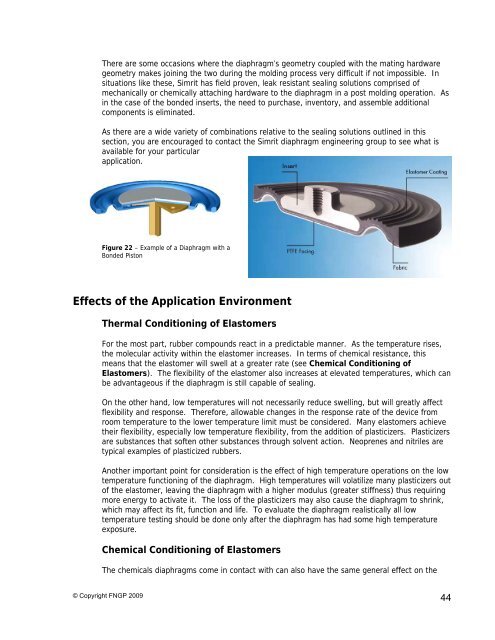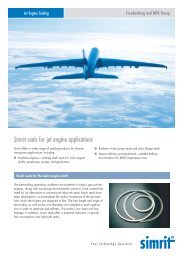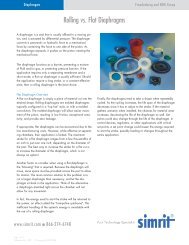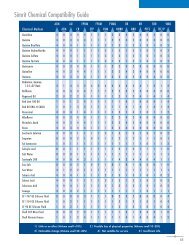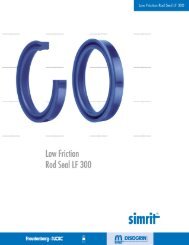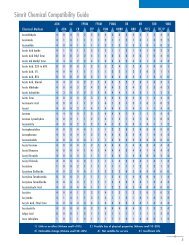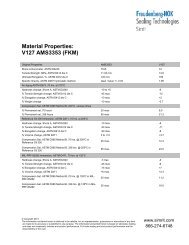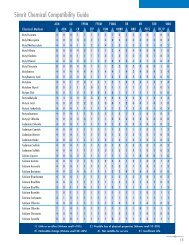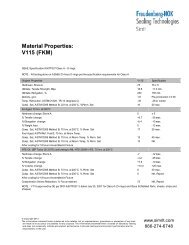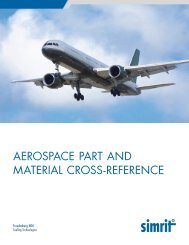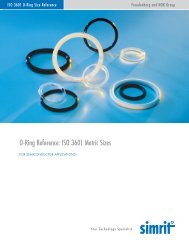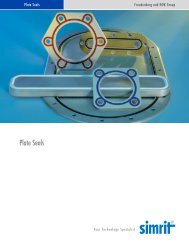Diaphragm Design Manual - Simrit
Diaphragm Design Manual - Simrit
Diaphragm Design Manual - Simrit
You also want an ePaper? Increase the reach of your titles
YUMPU automatically turns print PDFs into web optimized ePapers that Google loves.
There are some occasions where the diaphragm’s geometry coupled with the mating hardwaregeometry makes joining the two during the molding process very difficult if not impossible. Insituations like these, <strong>Simrit</strong> has field proven, leak resistant sealing solutions comprised ofmechanically or chemically attaching hardware to the diaphragm in a post molding operation. Asin the case of the bonded inserts, the need to purchase, inventory, and assemble additionalcomponents is eliminated.As there are a wide variety of combinations relative to the sealing solutions outlined in thissection, you are encouraged to contact the <strong>Simrit</strong> diaphragm engineering group to see what isavailable for your particularapplication.Figure 22 – Example of a <strong>Diaphragm</strong> with aBonded PistonEffects of the Application EnvironmentThermal Conditioning of ElastomersFor the most part, rubber compounds react in a predictable manner. As the temperature rises,the molecular activity within the elastomer increases. In terms of chemical resistance, thismeans that the elastomer will swell at a greater rate (see Chemical Conditioning ofElastomers). The flexibility of the elastomer also increases at elevated temperatures, which canbe advantageous if the diaphragm is still capable of sealing.On the other hand, low temperatures will not necessarily reduce swelling, but will greatly affectflexibility and response. Therefore, allowable changes in the response rate of the device fromroom temperature to the lower temperature limit must be considered. Many elastomers achievetheir flexibility, especially low temperature flexibility, from the addition of plasticizers. Plasticizersare substances that soften other substances through solvent action. Neoprenes and nitriles aretypical examples of plasticized rubbers.Another important point for consideration is the effect of high temperature operations on the lowtemperature functioning of the diaphragm. High temperatures will volatilize many plasticizers outof the elastomer, leaving the diaphragm with a higher modulus (greater stiffness) thus requiringmore energy to activate it. The loss of the plasticizers may also cause the diaphragm to shrink,which may affect its fit, function and life. To evaluate the diaphragm realistically all lowtemperature testing should be done only after the diaphragm has had some high temperatureexposure.Chemical Conditioning of ElastomersThe chemicals diaphragms come in contact with can also have the same general effect on the© Copyright FNGP 200944


